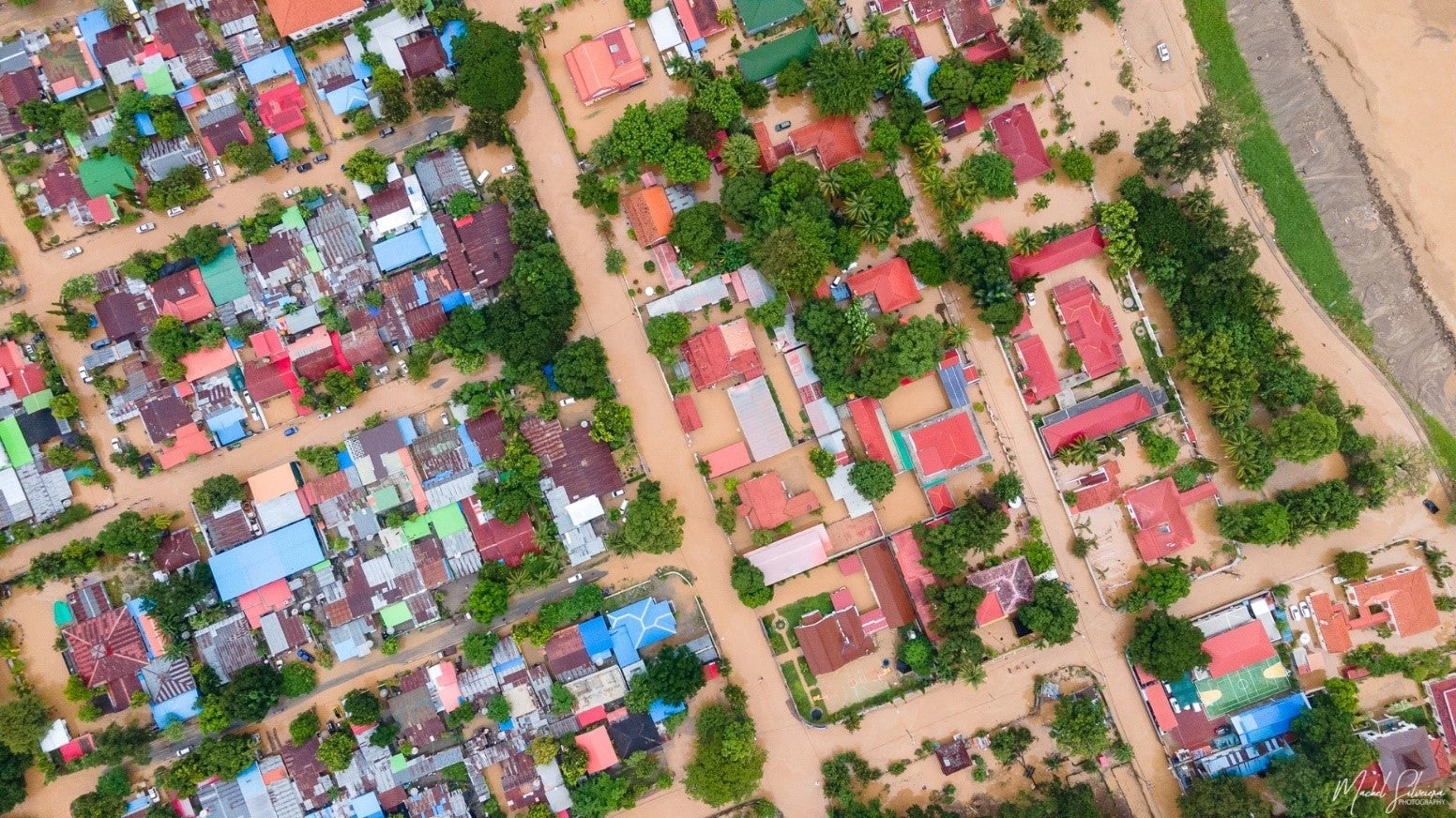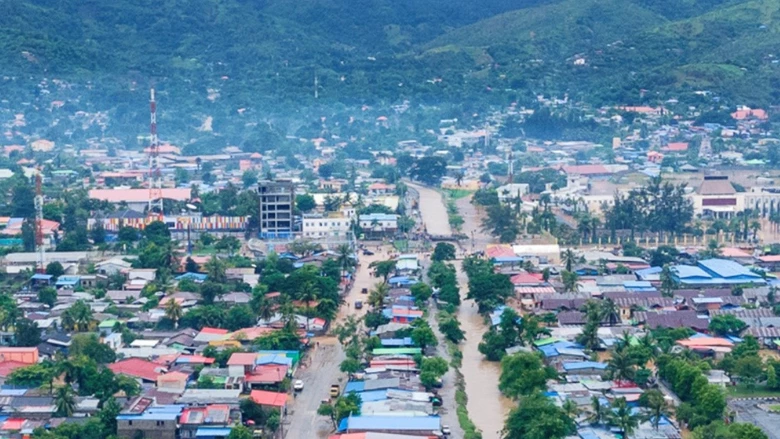 Dili, Timor-Leste inundated with flood waters following Cyclone Seroja
Dili, Timor-Leste inundated with flood waters following Cyclone Seroja
Over the past two years, many countries have been managing natural hazards while concurrently responding to the ongoing COVID-19 pandemic. The experience of recent disasters indicates that post-recovery, there are opportunities to strengthen multi‑hazard risk management systems more broadly.
In April 2021, Tropical Cyclone (TC) Seroja dropped 24 hours of torrential rains on Timor-Leste, a small nation with a population of 1.3 million. Flash floods, landslides, and soil liquefaction followed, damaging critical infrastructure, devastating agriculture, and claiming dozens of lives.
Damages to agriculture, roads, bridges, and housing alone were estimated at US$245 million. But the cost of resilient recovery and building back better could reach over $420 million – or approximately one-third of the government’s projected expenditure in 2021.
The national health laboratory, medical warehouse, and other critical health facilities were damaged, while displaced people congregated in evacuation centers with limited infection control measures. In the aftermath of the storm, the close quarters of these shelters and the poor quality of housing settlements likely exacerbated the risk of local COVID-19 transmission. The post-disaster situation might have contributed to a surge in cases over the following two months. The impacts of these dual shocks highlight how health-related emergencies can multiply risks and draw attention to the need for a multi-hazard approach to disaster and crisis management.
TC Seroja’s impact will be felt most acutely by Timor-Leste’s poorest residents, intensifying economic vulnerability in a country where the poverty rate is already high at 41.8% of the population:
- Significant damage to livestock and loss of crops (US$28.8 million), threatening the livelihoods of thousands – most poor Timorese households (63 percent in 2014) rely on agriculture for their livelihood.
- Severe damage to roads (US$170 million) – including hundreds of kilometers along main corridors – further isolating rural communities as bridges, embankments, and retaining walls failed under the pressure of flooding and debris flows.
- More than 30,000 households were impacted, of which over 4,000 houses were seriously damaged or destroyed – the estimated cost of recovery stands at over US$150 million if a “build back better” approach is adopted.
In response to the disaster, the Bank conducted a fully remote-based damage assessment in select sectors: Learning from Tropical Cyclone Seroja: Building Disaster and Climate Resilience in Timor-Leste. The report, funded by the Global Facility for Disaster Reduction and Recovery (GFDRR), assesses damages and needs but also makes recommendations for Timor-Leste to use the opportunity to strengthen resilience by building back better and preparing for future natural hazards. It offers sector-specific recommendations for priority actions while looking farther into the future, exploring how Timor-Leste can more effectively plan and invest in disaster risk management in years to come – lessons that could also apply to other countries with similar risk profiles.
What do we recommend?
With risk-informed planning, targeted investments, and the right financing tools, Timor-Leste can look beyond the immediate post-disaster recovery program to enhance systems, institutions, and infrastructure to become stronger, more inclusive, and more resilient.
The first step is to better understand the country’s disaster and climate risks, which will call for political commitment, comprehensive risk data, and prioritization of investments. Timor-Leste, like many small countries with limited resources, will need to focus on investments that reduce risk and strengthen preparedness for future natural hazards.
A key part of this resilient recovery approach is investing in risk mitigation during reconstruction – as Timor-Leste is exposed to not only tropical storms but also floods, landslides, droughts, earthquakes, and tsunamis. Recognizing this, the report’s recommendations span: (i) the institutional, policy, legal, and regulatory environment; (ii) multi-hazard early-warning systems; (iii) risk mitigation investments; and (iv) emergency preparedness and response.
For instance, the report proposes a multi-hazard approach to a national regulatory framework on disaster risk management and mainstreaming of disaster risk management into key sectoral policies. The theme of integration also applies in the realm of early-warning systems. For Timor-Leste, crucial steps not only include strengthening data collection systems and enhancing capacity to monitor hazards 24/7, but also building regional partnerships – coming together with partners so that the country can provide the real-time forecasting needed to save lives.
Moreover, a synthesis of approaches is critical. For example, investments in flood resilience in the capital of Dili should combine traditional measures like dikes and drainage improvements with green infrastructure, nature-based solutions, and non-structural measures like risk-informed development controls and community awareness.
A new chapter
This impact assessment is indicative of the Bank’s renewed engagement on disaster risk management in Timor-Leste. Building on previous projects, which focused on community-level DRM, the new report lays the foundation for new partnerships on disaster and climate resilience, envisioning new scales and partnerships.
With the new opportunities – and risks -- on the horizon, Learning from Tropical Cyclone Seroja not only looks back at the effects of the cyclone – it also leans into a promising future for Timor-Leste’s journey to strengthening its resilience.
READ MORE:
- Report: Learning from Tropical Cyclone Seroja
- Blog: Adapting disaster risk management for public health emergencies in the Asia Pacific region
- Blog: Urban flood resilience in Indonesia: New approaches through an urban design lens
- Report: Frontline – Preparing Healthcare Systems for Shocks from Disasters to Pandemics





Join the Conversation